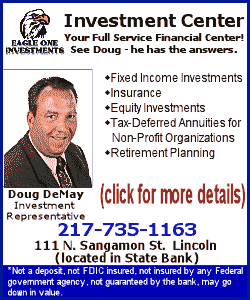|
Stronger spending by businesses and government powered the rebound in the April-to-June quarter. Individuals, however, tightened their belts as they coped with high gasoline prices and the ill effects of the housing slump. The sour housing market continued to weigh on national economic activity in the spring but not nearly as much as it had in previous quarters.
Inflation -- outside a burst in energy and food prices -- moderated.
The second quarter's performance was better than the 3.2 percent growth rate economists were expecting. It was the strongest showing since the first quarter of 2006, when the economy expanded at a brisk 4.8 percent annual rate.
Gross domestic product measures the value of all goods and services produced in the United States. It is considered the best barometer of the country's economic fitness.
Even as the economy picked up speed in the spring, inflation managed to settle down.
An inflation gauge closely watched by the Federal Reserve showed "core" prices
-- excluding food and energy -- rose at a rate of just 1.4 percent in the second quarter. That was down sharply from a 2.4 percent pace in the first quarter and was the smallest increase in four years.

That should help ease inflation concerns. Fed Chairman Ben Bernanke has said the biggest threat to the economy is if inflation doesn't recede as policymakers anticipate. Out-of-control prices are bad for the economy and the pocketbook. They eat into paychecks, erode purchasing power and reduce the value of investments.
The Fed has kept a key interest rate at 5.25 percent for more than a year. Economists predict that rate will stay where it is through the rest of 2007.
The economic rebound news comes one day after a market meltdown on Wall Street. Stocks plunged more than 300 points on Thursday, its second worst day of the year. The sell-off came amid investors' worries that troubles in the housing and home-mortgage markets could spread.
The ailing housing market is still crimping economic activity but not as much as it had.
Investment in home building was cut by 9.3 percent, on an annualized basis, in the second quarter. That wasn't nearly as deep as the 16.3 percent annualized drop in the first quarter. It was the smallest cut in just over a year.
[to top of second column]

 |

Businesses, meanwhile, regained their appetite to spend and invest in the second quarter.They boosted their spending on new plants, buildings and other commercial construction at a whopping 22.1 percent rate, the most in 13 years. Investment on equipment and software posted a 2.3 percent growth rate, an improvement from a meager 0.3 percent growth rate in the first quarter.
Businesses also replenished their inventories in the second quarter, adding to overall economic growth. Stronger export growth helped the nation's trade picture and added to the economy's momentum.
Also contributing to the second quarter's rebound: Government spending increased at a 4.2 percent pace. That compared with a 0.5 percent annualized drop in the first quarter.
However, consumers, whose spending largely prevented the economy from stalling out in the first three months of this year, lost energy in the second quarter. They boosted spending at a pace of just 1.3 percent, the smallest since the final quarter of 2005.
High gas prices -- past $3 a gallon -- and ill effects of the housing slump are beginning to take their toll on peoples' appetite to spend. Still, a solid jobs climate
-- the nation's unemployment rate is at a relatively low 4.5 percent -- should help cushion some of these negative forces.

Even with the steady employment climate and the economic rebound, President Bush continues to shoulder weak public-approval ratings for his economic stewardship. Only 37 percent approve of his performance, close to a record low, according to a recent AP-Ipsos poll.
Trying to capitalize on that, Democrats have accused the president of not doing enough to help close the gap between low- and high-wage workers.
The government also issued annual revisions that showed the economy grew at an average annual rate of 3.2 percent from 2003 through 2006, or 0.3 percentage point less than previously estimated. The revisions are based on more complete data.
Last year the economy grew by 2.9 percent -- slower than the 3.3 percent increase previously calculated. The new figure marked the weakest annual growth since 2003.
[Associated Press;
by Jeannine Aversa]
Copyright 2007 The Associated Press. All rights reserved. This
material may not be published, broadcast, rewritten or
redistributed.

 |